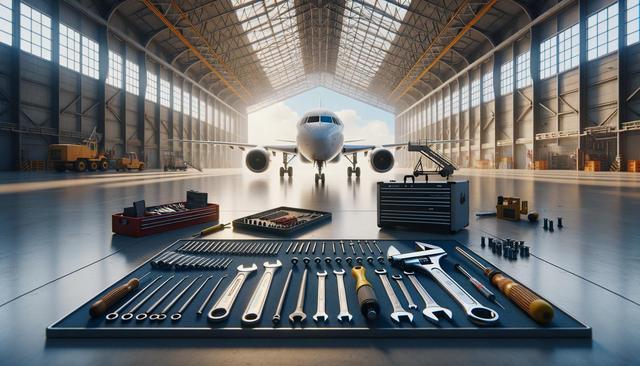The Critical Role of Aviation Mechanics
Aviation mechanics are responsible for maintaining, repairing, and inspecting aircraft to ensure they meet strict safety and performance standards. Their work underpins the entire aviation ecosystem, from commercial airlines to private jets and military aircraft. With the rise in global air travel, the demand for skilled mechanics has increased, resulting in a growing need for robust aviation training programs. These programs help prepare individuals for the technical challenges of the field and ensure they meet aviation training requirements set by regulatory authorities. Mechanics typically specialize in areas such as airframe, powerplant, or avionics, depending on their certification and training.
The responsibilities of aviation mechanics include:
- Conducting routine inspections and preventive maintenance
- Diagnosing mechanical and electrical issues
- Repairing or replacing defective parts
- Ensuring all repairs comply with aviation safety standards
These professionals are essential not only for operational safety but also for minimizing downtime of aircraft, which is crucial for airlines and operators. Their attention to detail and adherence to safety protocols directly contribute to the overall success of the aviation training industry.
Pathways Through Aviation Training Programs
To become an aviation mechanic, individuals must complete certified aircraft maintenance training programs. These are typically offered by aviation schools, technical colleges, or through apprenticeships with licensed repair stations. Programs range in duration, but most involve a combination of classroom instruction and hands-on experience with aircraft systems and tools. Students learn about aerodynamics, materials science, electronics, and hydraulics, among other topics.
Aviation training programs typically require:
- A high school diploma or equivalent
- Background checks and drug testing
- Completion of FAA-approved curriculum (in the U.S.)
- Passing written, oral, and practical exams
Upon successful completion, graduates can pursue aviation training jobs with airlines, maintenance and repair organizations (MROs), or aircraft manufacturers. Entry-level positions often lead to more advanced roles, such as lead technicians or maintenance managers, especially with continued education and experience. Some mechanics may even transition into instructional roles within the aviation training industry.
Companies Supporting Aircraft Maintenance and Repair
Numerous companies specialize in aircraft maintenance and repair, providing essential services that support aviation operations worldwide. These organizations range from small independent repair shops to large-scale Maintenance, Repair, and Overhaul (MRO) facilities. Many of them also partner with educational institutions to offer apprenticeships and on-the-job training, helping bridge the gap between classroom learning and real-world application.
These companies play a vital role in:
- Providing hands-on experience for students in aviation training programs
- Maintaining high standards of aviation safety training in the United States
- Employing graduates of aircraft maintenance training programs
By investing in technology and workforce development, these firms contribute significantly to the growth and innovation of the aviation sector. They also serve as key employers for individuals seeking stable and rewarding aviation training jobs.
The Importance of Aviation Safety and Regulatory Compliance
In aviation, safety is non-negotiable. Mechanics are expected to perform their duties within a framework of strict regulatory oversight. In the United States, this responsibility falls primarily under the Federal Aviation Administration (FAA), which outlines comprehensive standards for aviation safety training, maintenance procedures, and technician certification. Other countries have their own governing bodies but often align with international standards set by organizations such as the International Civil Aviation Organization (ICAO).
To maintain compliance, aviation mechanics must:
- Keep detailed maintenance records
- Follow manufacturer guidelines and service bulletins
- Participate in recurrent training and certification renewals
- Report and address safety issues promptly
Ongoing aviation safety training in the United States ensures that mechanics stay current with evolving technologies and practices. This includes training in areas such as human factors, fatigue management, and emerging aircraft systems. Compliance helps protect passengers, crew, and the public, reinforcing confidence in air travel globally.
Opportunities and Challenges in Aviation Training Jobs
The aviation maintenance field offers diverse career opportunities, but it also comes with challenges. Technicians often work in demanding environments, including outdoor tarmacs, crowded hangars, and tight deadlines. Despite these conditions, the profession offers competitive wages, job stability, and the satisfaction of contributing to public safety and transportation efficiency.
As the aviation industry grows, so does the need for qualified personnel. This has led to increased investment in aviation training programs and a focus on improving access to education. However, some challenges persist:
- Shortage of qualified instructors
- High cost of education and certification
- Rapid technological advancements requiring constant upskilling
Addressing these issues is essential for sustaining the workforce. Companies, governments, and educational institutions must collaborate to enhance the quality and accessibility of aircraft maintenance training. When done effectively, this ensures a steady pipeline of professionals ready to take on aviation training jobs across the globe.
Conclusion: Building the Future of Aviation Maintenance
For those interested in a hands-on, technically challenging, and impactful career, aviation mechanics represent a strong professional path. With advancements in aircraft technology and an expanding global fleet, the need for skilled maintenance professionals is expected to remain high. Aviation training programs that align with current industry demands and regulatory standards are crucial for preparing the next generation of mechanics. Whether through classroom education, on-the-job experience, or continued aviation safety training in the United States, the aviation training ecosystem is a vital component of the broader aerospace sector. By supporting both individuals and companies involved in aircraft maintenance training, the aviation industry can continue to ensure safe, efficient, and reliable air travel well into the future.




Leave a Reply